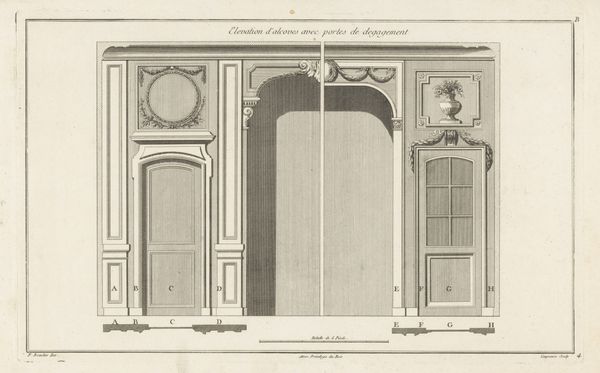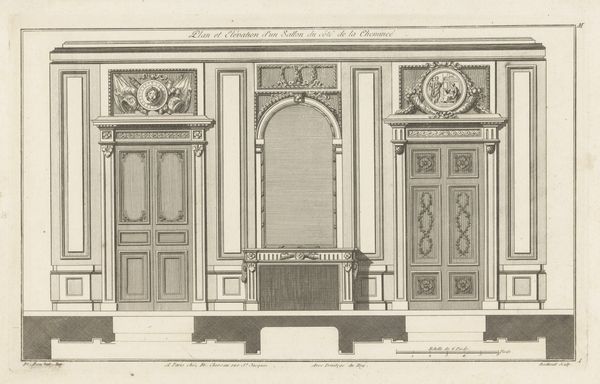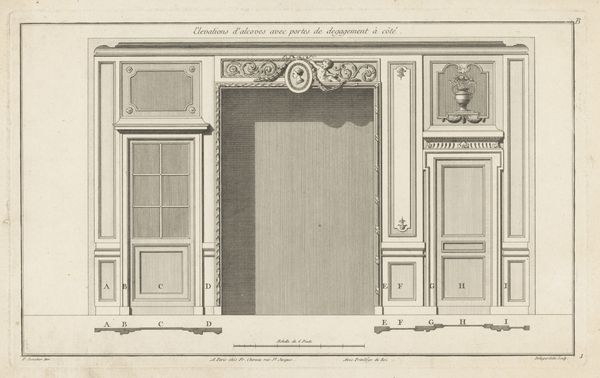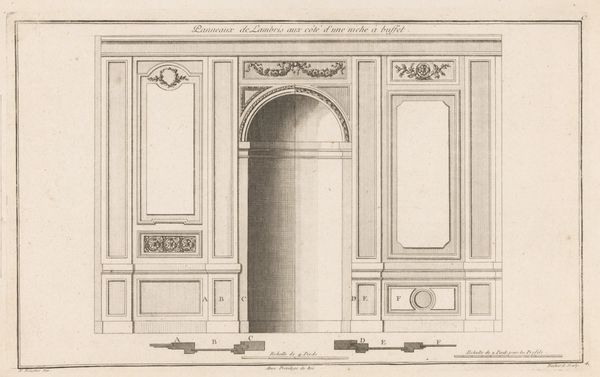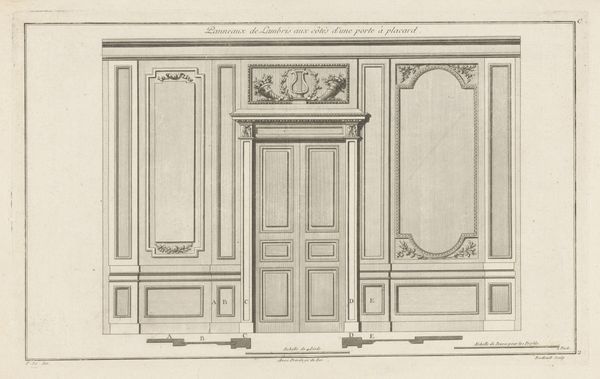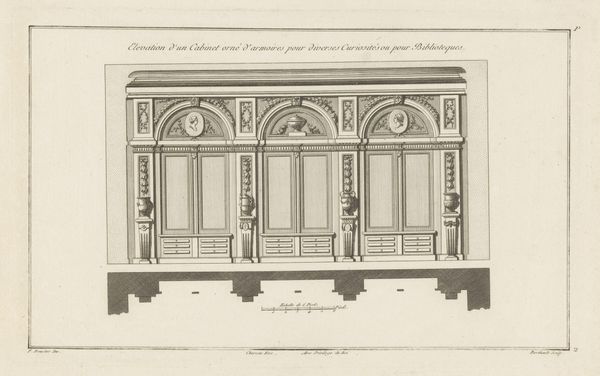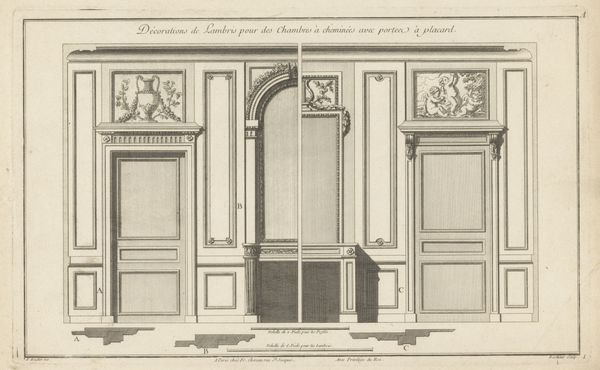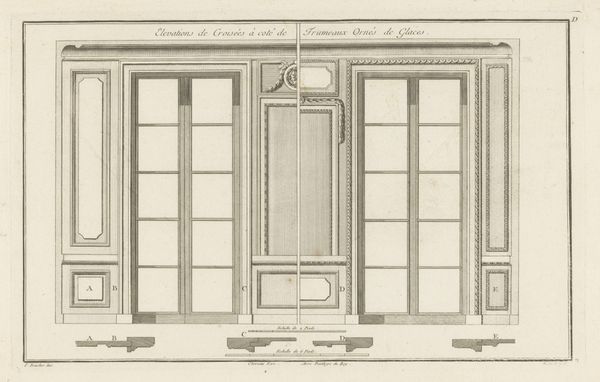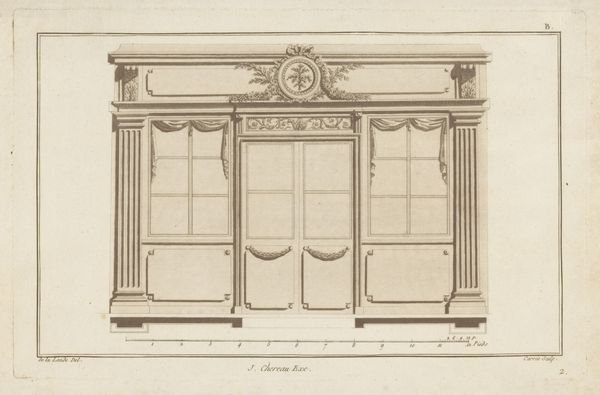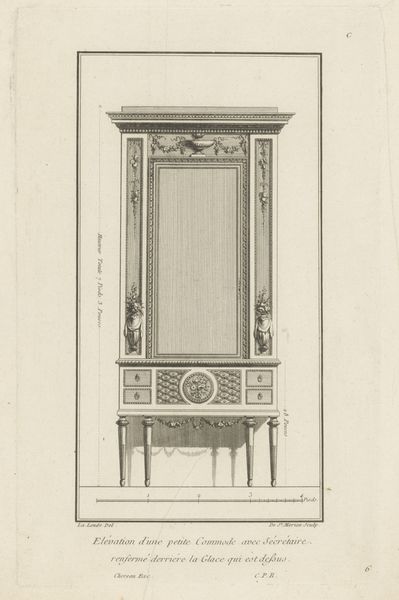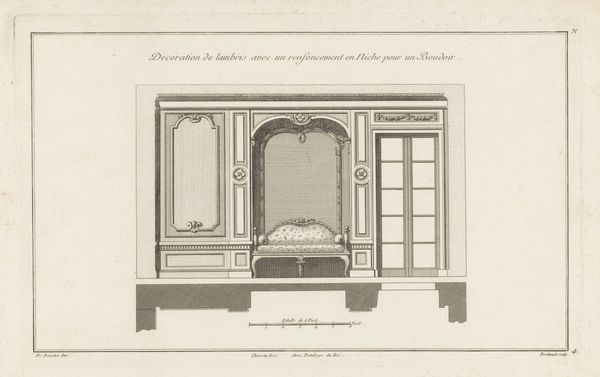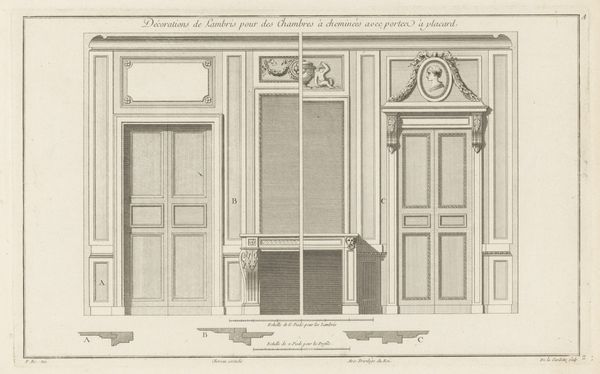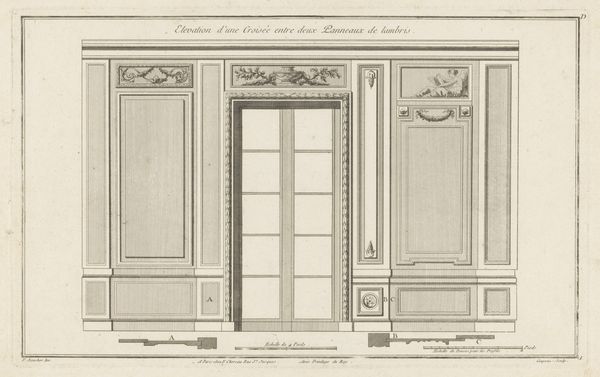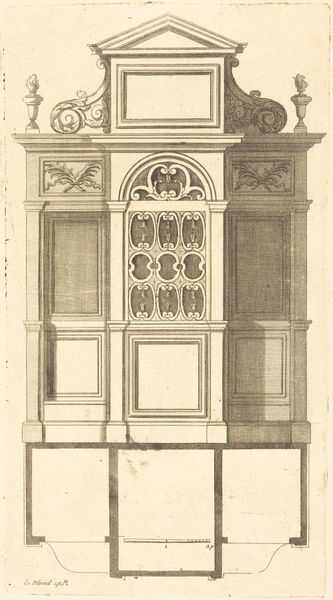
drawing, print, engraving, architecture
#
drawing
#
neoclacissism
# print
#
landscape
#
geometric
#
engraving
#
architecture
Dimensions: height 224 mm, width 361 mm
Copyright: Rijks Museum: Open Domain
Editor: So, this is Pierre Gabriel Berthault’s "Alkoven met liggende vrouw en medaillon," dating back to sometime between 1752 and 1794. It’s a drawing, an engraving really, showing an architectural alcove. It feels very staged, like a set design. How do you interpret this work, considering the historical context? Curator: It's crucial to understand that during this period, Neoclassicism was heavily invested in the idealization of form, mirroring the perceived rationality of the Enlightenment. But it also acted as a visual language of power. Look at the rigid geometry and how it frames domesticity. What message do you think this sends about gender and power at the time? Editor: I guess it’s showing the woman as both idealized, like an object, but also confined by these rigid structures. Almost like the architecture itself is enforcing societal expectations. Curator: Exactly. Think about the "alcove" itself - a semi-private space within a larger room. What purpose might it serve for those depicted? Is it truly a place of refuge or simply a space where privacy and even the identities of women are only an illusion of protection as they remained in the public sphere? Editor: That’s interesting. So it’s not just a pretty picture; it's actually about the way gender and social roles are being constructed? Curator: Absolutely. Even something that seems purely aesthetic, like Neoclassical architecture, is deeply intertwined with the social and political values of its time. Understanding those connections allows us to engage critically with the power dynamics at play. How can visual literacy empower people? Editor: It's fascinating to think that what I initially saw as just an architectural drawing is loaded with commentary on gender and social control. Curator: Precisely. Art like this isn't just about aesthetics. It’s a product of—and a commentary on—the society that created it. Considering Berthault and his gender could provide a deeper perspective into the piece.
Comments
No comments
Be the first to comment and join the conversation on the ultimate creative platform.
